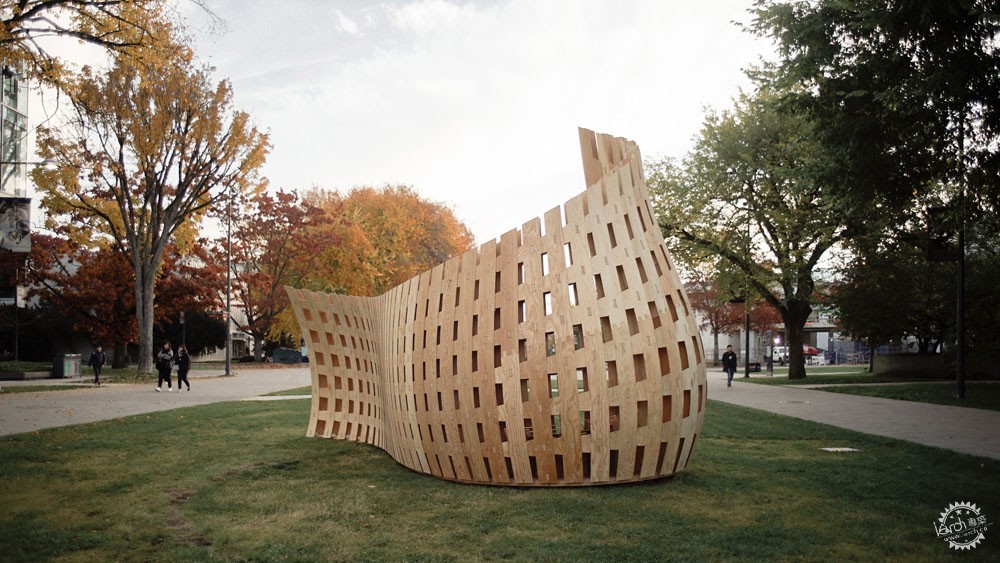
机器人制造的木制雕塑
Students erect robotically fabricated wooden bench on Vancouver university campus
由专筑网王帅,李韧编译
最近,位于温哥华的不列颠哥伦比亚大学校园里安装了一座雕塑,雕塑上搭接的弯曲木板条由机器人完成切割。
Robots sliced the interlocking, curved wooden slats that form this sculptural bench, which is currently installed on the campus of the Vancouver's University of British Columbia.
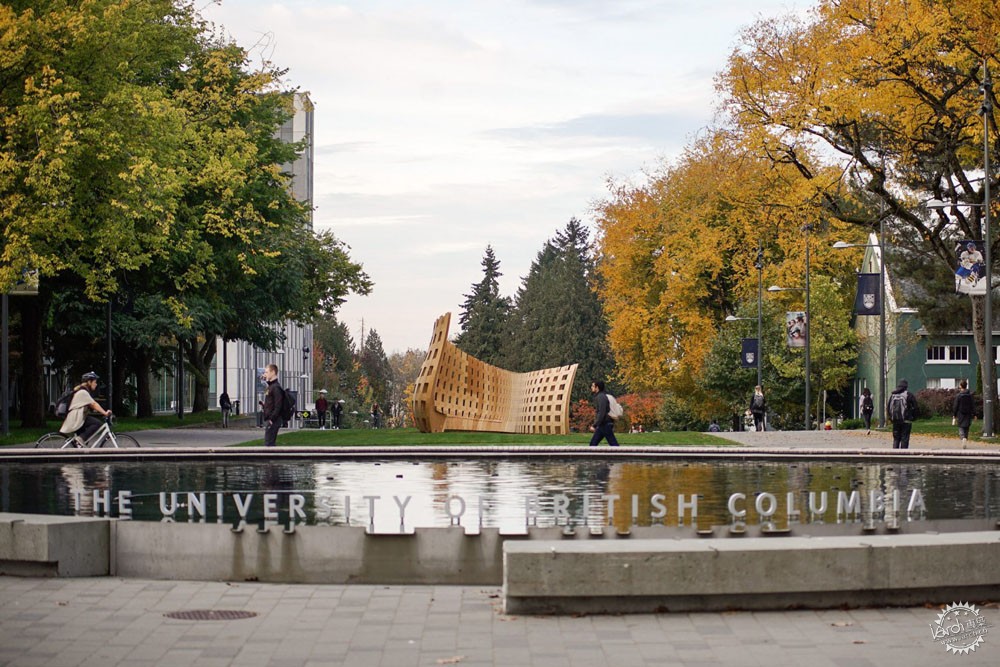
这座名为“漫游木亭”的临时雕塑由建筑学学生工作坊完成,在学校建筑学和风景园林学院(SALA)与先进木材加工中心联合举办的“机器人制造:大规模机器人木材制造”活动期间,他们合作完成了该项目。
15名建筑系学生和21名外部合作伙伴联合参加了该活动,他们的任务为使用计算机工具为学校的公共绿地制作一款木制装置。
The temporary Wander Wood Pavilion was built during the Robot Made: Large-Scale Robotic Timber Fabrication in Architecture student workshop, held by the university's School of Architecture and Landscape Architecture (SALA) and Centre for Advanced Wood Processing (CAWP).
Participants included 15 architecture students and 21 external partners, who were required to fabricate and assemble a wooden installation for the university's public green using computational tools.
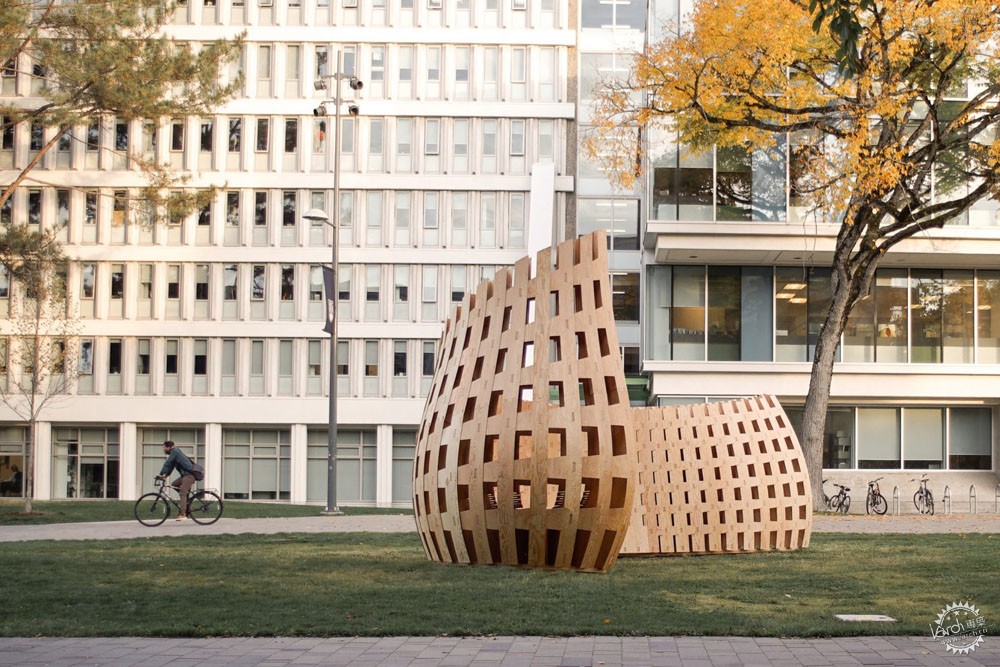
学生们在最后的设计中,将两排木板条的形状不断调整,形成了结构的轮廓。外部为一座圆形外壳,让里面的公共长凳若隐若现。
为了在木材中创造出有机形状,研究小组设计了这个结构的数字3D模型。然后将其分成各个部件,最后使用机器人将其切割制造。
In the final design, two rows of wooden slats steadily change in shape to create the structure's outline, which curves to a peak. The exterior forms a rounded shell, partially enclosing a public bench inside.
To create this organic shape in wood, the team created a digital 3D model of the structure. This was then segmented into the individual sections that were cut using robotically controlled tools.
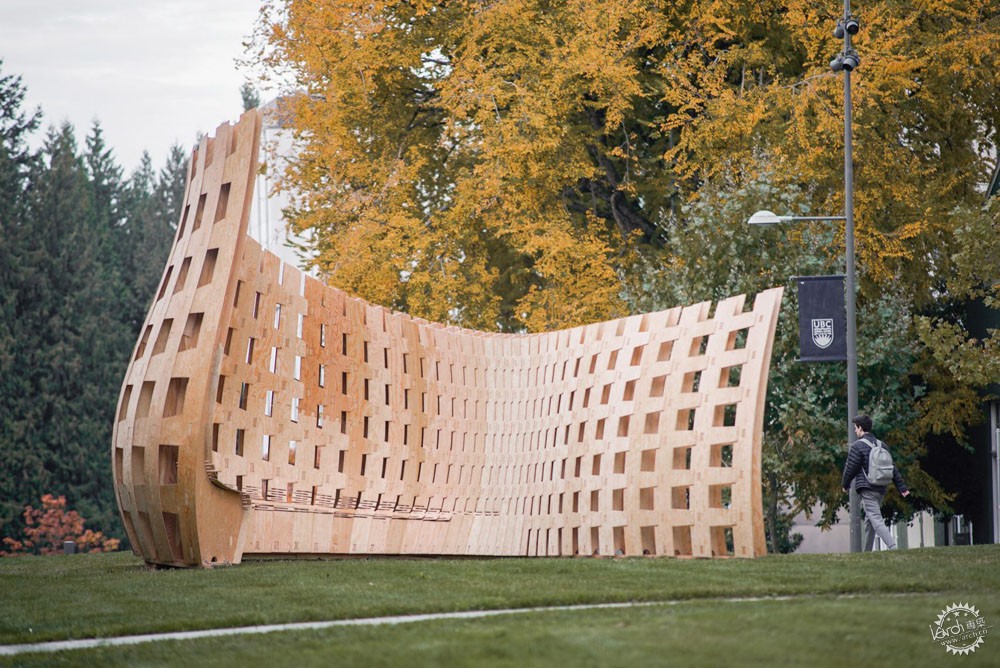
该团队在项目声明中表示:“这种试验性的结构展示了这项技术对于开发创新材料应用的新能力,它利用木材的独特性质激发了公共空间的活力。”
“木材让该技术发挥得淋漓尽致,因为机器人可以非常轻松地加工与塑造木材。”
"This experimental structure demonstrates the new capabilities of the technology to develop innovative material applications that harness the unique properties of wood to animate public spaces," said the team in a project description.
"Wood is a natural partner for these technologies because of the ability to easily mill and shape it with robotically controlled cutting tools."
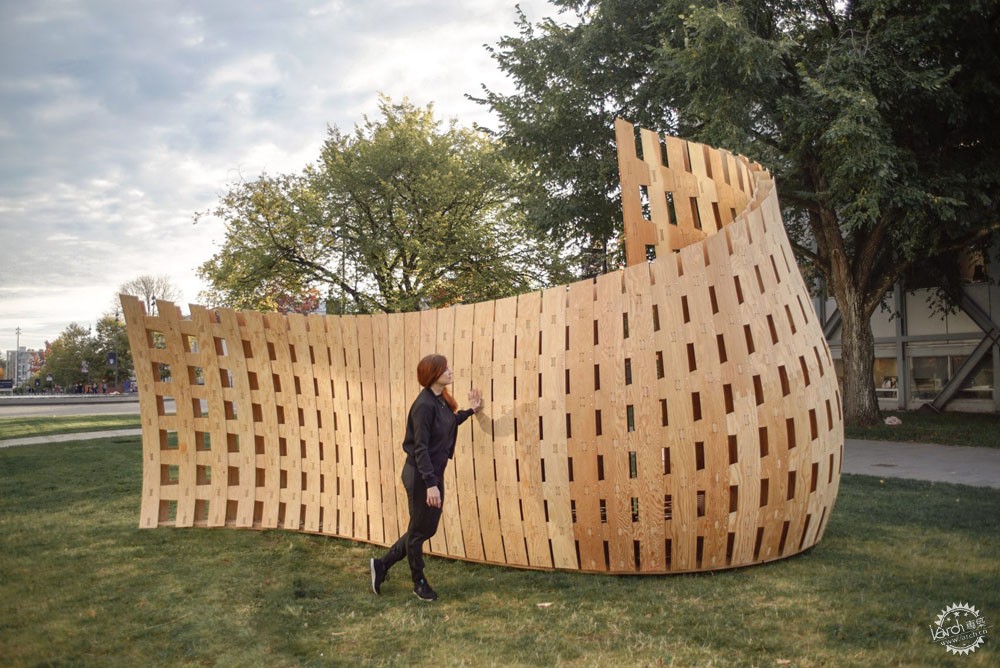
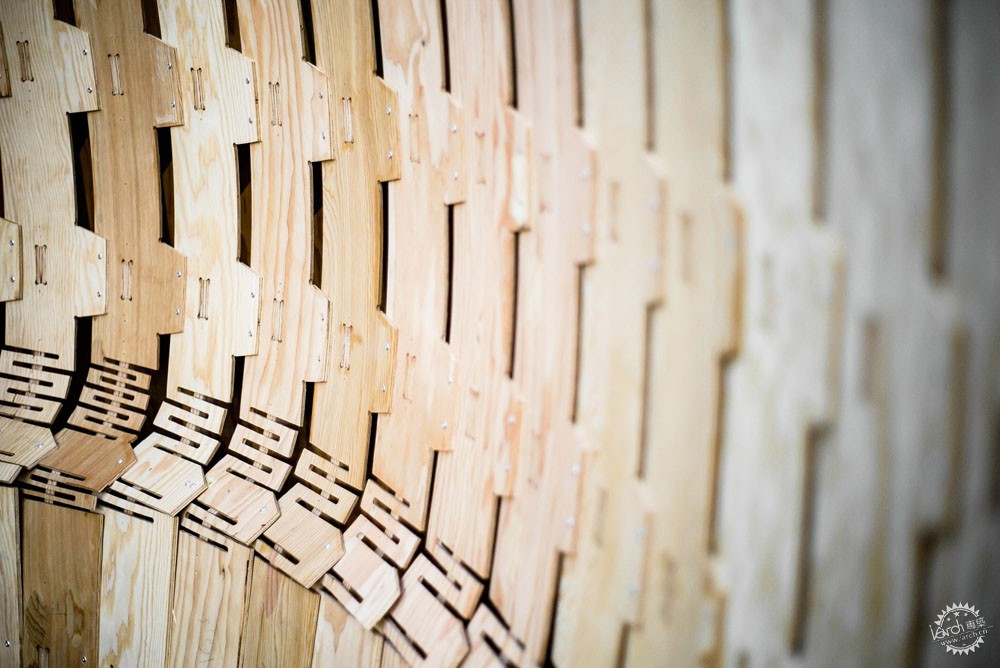
设计团队将两排木板条拼在一起,形成了外层先向内弯曲、再向外弯曲的结构形态。雕塑上每个木齿重叠的部分可以将零件固定在一起。
滑铁卢大学建筑学教授David Correa共同指导了该项目,他告诉Dezeen的记者:“这座雕塑使用了联锁组件与2200个铆钉,整个装置在先进木材加工中心室内完成制造,然后分成几部分搬到现场。”
Two rows of the wooden slats are pieced together to form the structure, with the outer layer bending inwards and then outwards. Wooden teeth on each section overlap so the pieces can be screwed together.
"The pavilion was assembled by using interlocking components in combination with 2,200 rivets," University of Waterloo architecture professor David Correa, who co-led the build, told Dezeen. "The whole installation was built at the Advanced Wood Processing centre indoor wood shop and then moved in sections to the site."

雕塑内部引入了一条逐渐出现的曲线,形成了供公众休息的长椅。而底部的板条被分割成锯齿状。
Correa也是IILab的联合创始人,他与建筑学和风景园林学院教授AnnaLisa Meyboom、LWPAC事务所的Oliver David Krieg共同领导了机器人制造工作,其中,Oliver David Krieg是一名计算机设计和数字制造专家,这座木制装置将会根据天气进行为期一年的展览。
The interior gradually introduces a curve that forms the bench for members of the public to rest. The slats are segmented at the base into zig-zagged sections in order to include this feature.
Correa, who is also the co-founder of IILab, led the Robot Made workshop build with SALA professor AnnaLisa Meyboom, and Oliver David Krieg of Lang Wilson Practice in Architecture Culture – who is a computational design and digital fabrication specialist – from 13 to 18 October 2018. The Wander Wood Pavilion is intended to stay up for a year, depending on the weather.
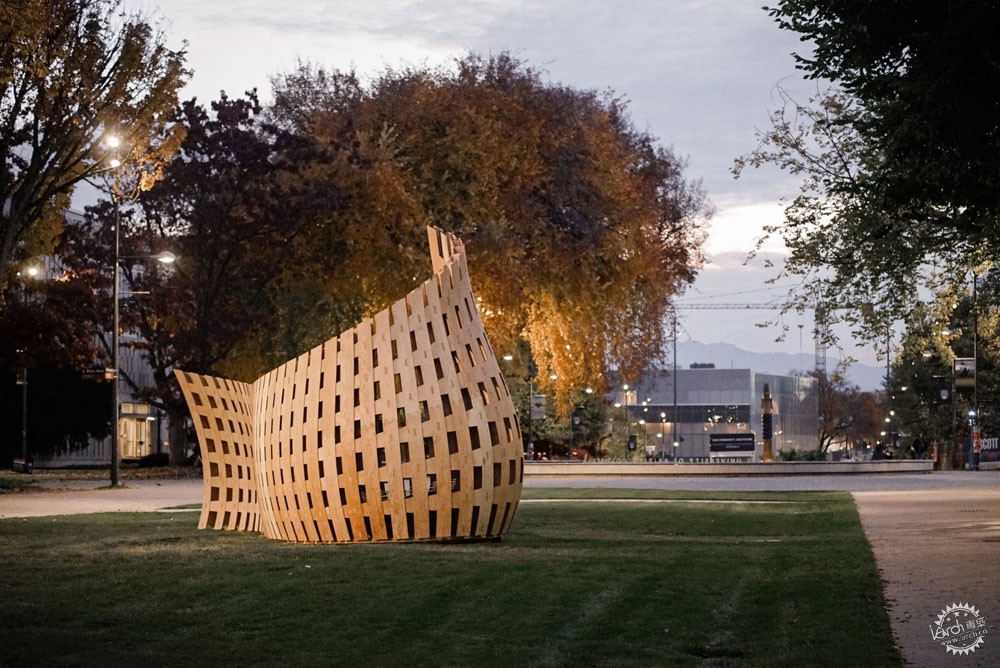
这座雕塑是该团队使用相同制造系统开发的成果。该项目的总体目标是展示木材结构,利用机器人技术设计各种结构,同时倡导可持续生产。
该团队表示:“木材是高度可持续材料,它不仅是一种可再生资源,而且还能储存碳。这使它成为世界上可持续发展程度最大的建筑材料。”
It is intended as one of several outputs developed by the team using the same fabrication system. The overall goal is to show how timber construction can be adapted to create a variety of structures using robotic technology, while championing sustainable production.
"Wood is highly sustainable – not only is it a renewable resource but it also stores carbon – making it one of the most sustainable building materials in the world," said the team.
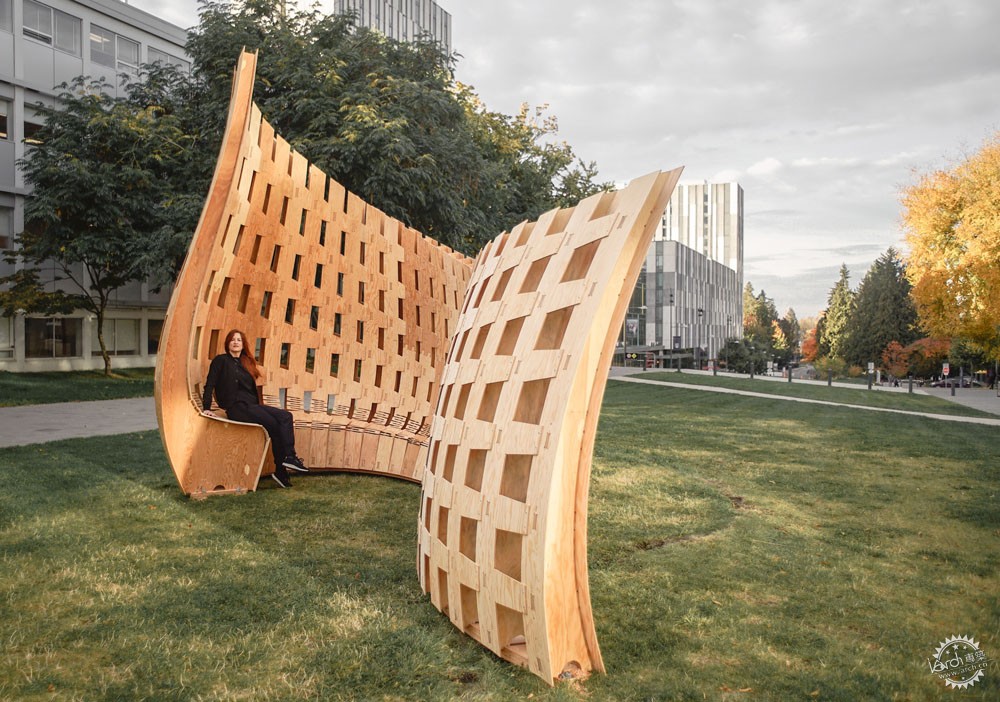
对于学生来说,在这种小型临时装置中使用机器人等新技术是一种简单快捷的方法。
苏黎世联邦理工大学的团队也试用过这项技术,他们设计了一个悬浮在空中的无人机结构,还有德国斯图加特大学的一个团队使用机器人制作了叠层胶合板展馆。
Small, temporary structures like the Wander Wood Pavilion are an easy and quick way for students to work with new techniques like robotic construction.
Others that have also experimented with this technology include a team at ETH Zurich, which created a drone-woven structure suspended in the air, and a group from the University of Stuttgart, which employed robots to mould and stitch together a laminated plywood pavilion.
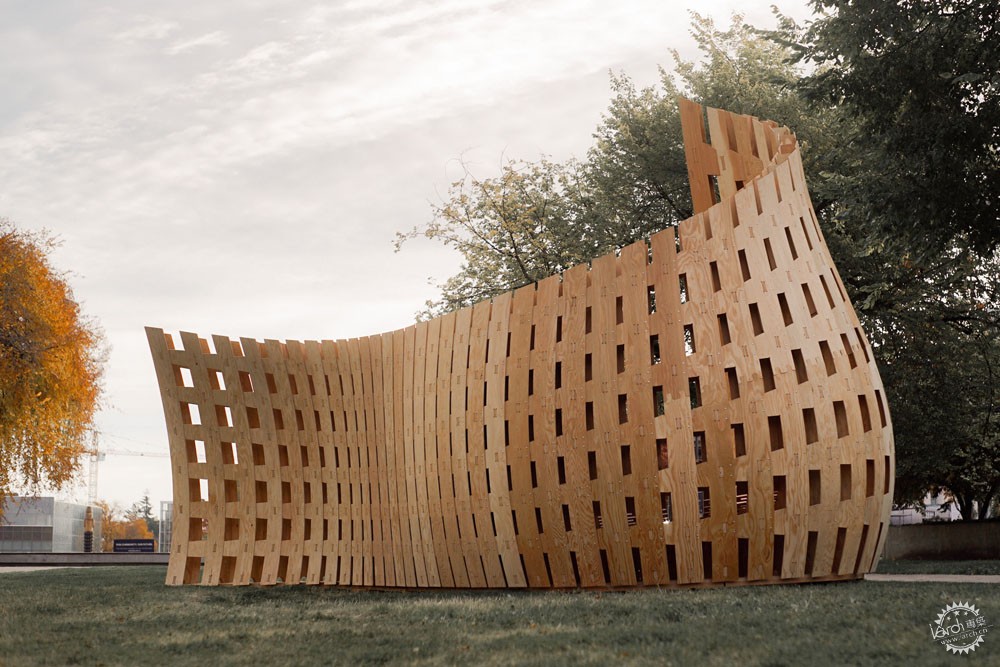
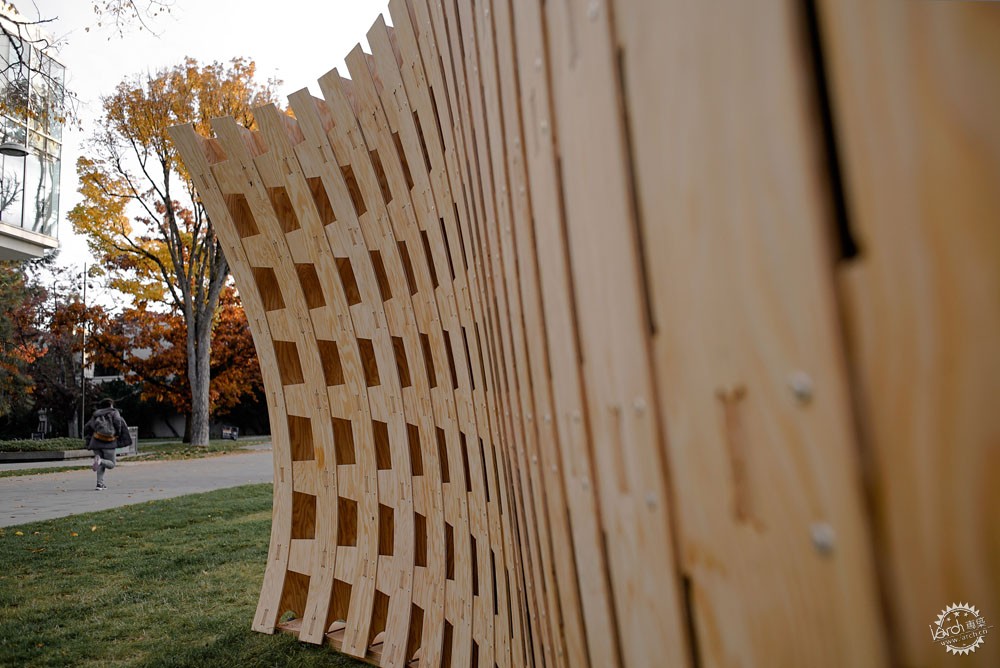
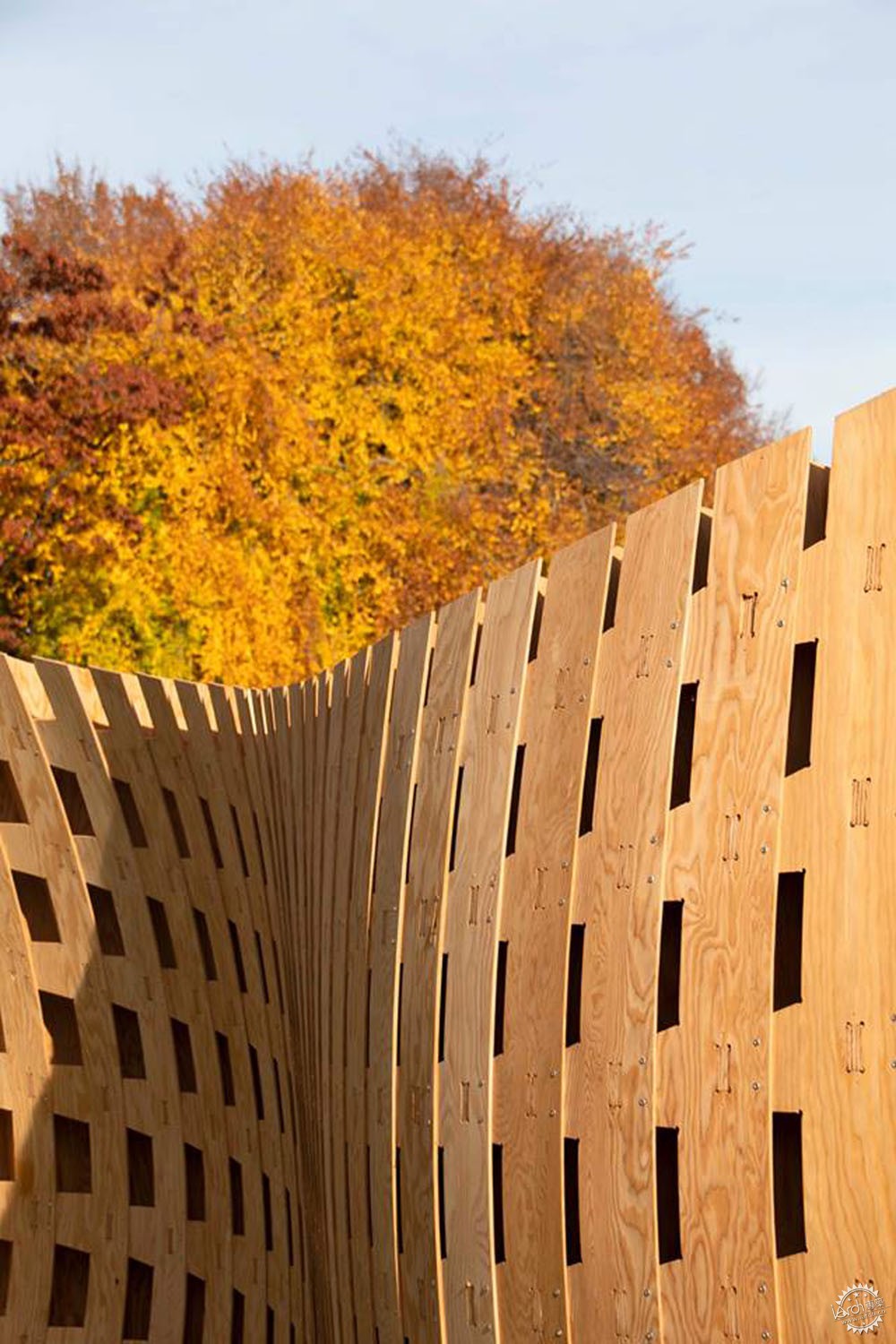

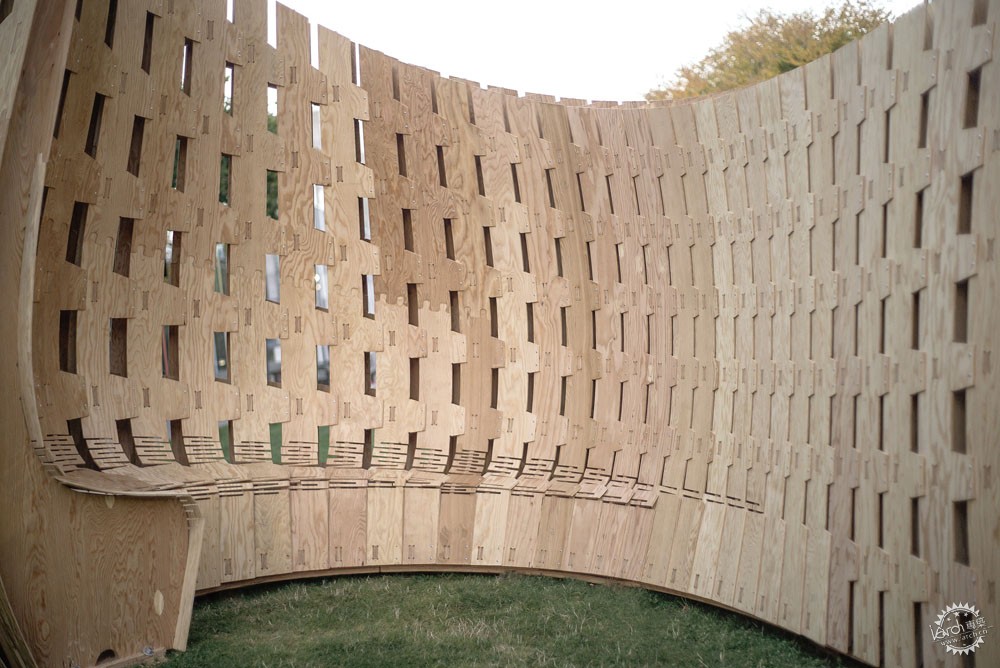

|
|
专于设计,筑就未来
无论您身在何方;无论您作品规模大小;无论您是否已在设计等相关领域小有名气;无论您是否已成功求学、步入职业设计师队伍;只要你有想法、有创意、有能力,专筑网都愿为您提供一个展示自己的舞台
投稿邮箱:submit@iarch.cn 如何向专筑投稿?
